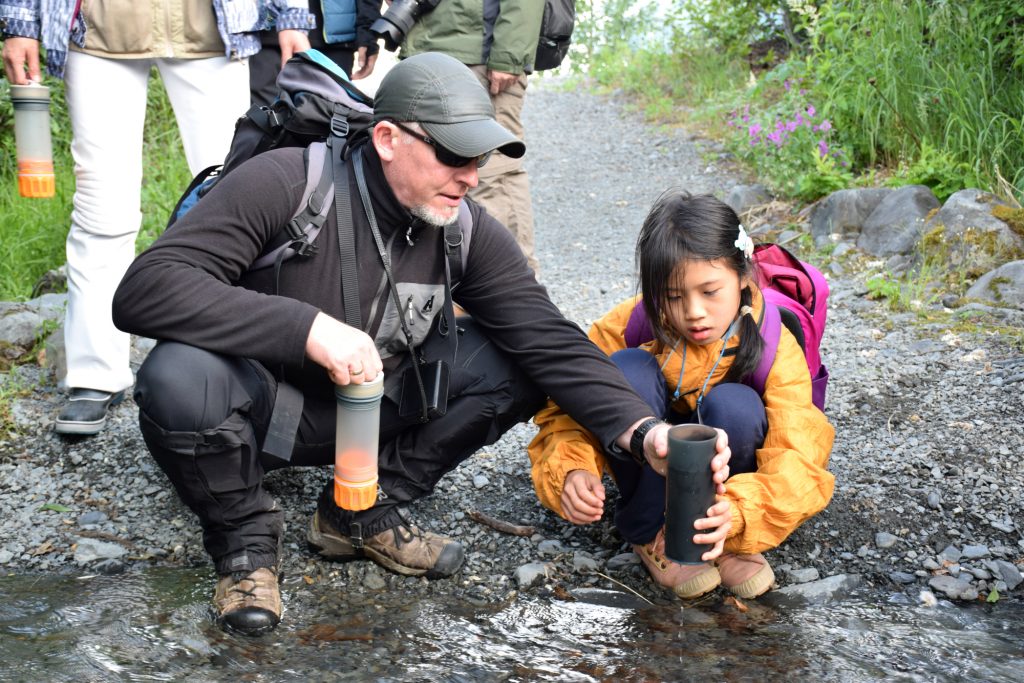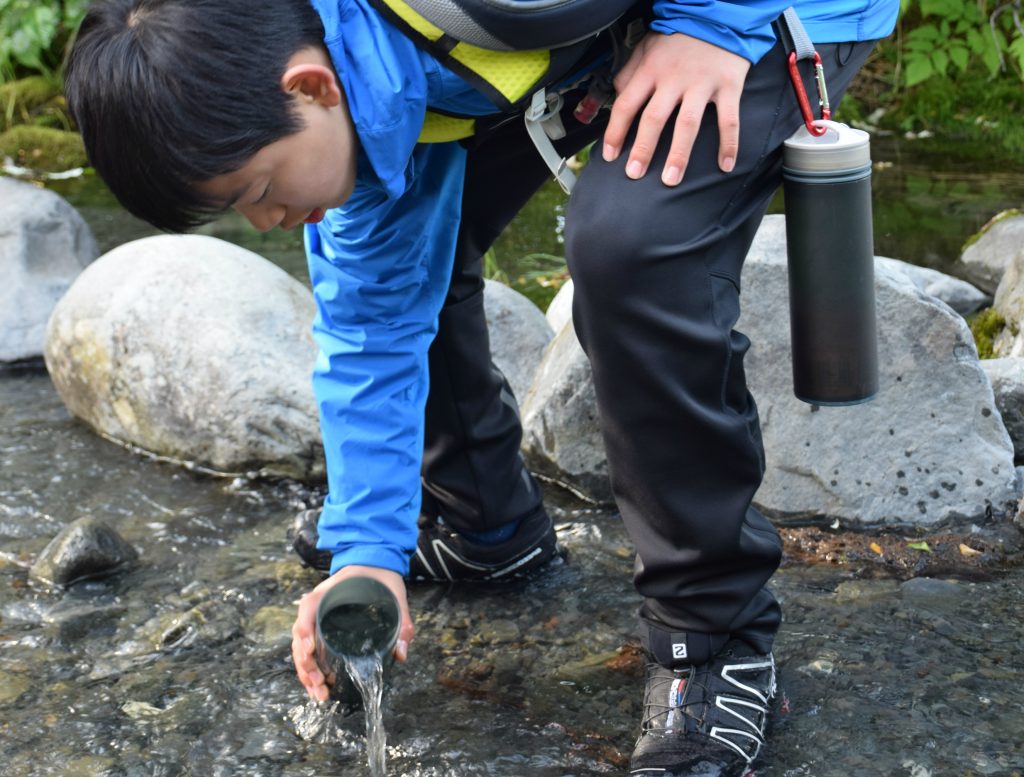Truth be told, when Jake Finifrock, owner and operator of Midnight Son Tours, first decided to provide GRAYL purifiers to his guests, reducing single-use plastic was not top of mind. He simply wanted a better way to provide safe, clean drinking water for his clients. GRAYL Ultralight purifiers remove viruses, bacteria, protozoa, sediment, chemicals, and heavy metals from virtually any freshwater source. As it turned out, sharing GRAYL with his clients proved to be the catalyst for confronting the issue of single-use plastics pollution, which he now discusses with his tour groups.

“I saw in GRAYL a really cool and useful product for the tours I give, so I’m not having to buy water, cart it in,” Finifrock said. “Then as I educated myself, and explained to my guests who are not aware of the extent of the issue with plastic waste, I got sort of wrapped up in the cause. I feel more and more a sense of social responsibility.”
In early 2018, Midnight Son Tours became a participant of the Adventure Travel Trade Association (ATTA) and GRAYL initiative to help travelers and tour operators reduce their dependency on single-use plastic water bottles and provide safe drinking water to their guests. The initiative is designed to challenge adventure travel companies to become part of the solution by implementing actions to curb the rapidly growing problem of plastic bottle pollution in pristine destinations across the globe.
How Midnight Son Tours Participates in the Initiative
First and foremost, Finifrock provides GRAYL purifiers on his tours because they are a useful and practical source of clean water for his guests. The GRAYL purifiers are also an important talking point for Finifrock. When he explains how and why to use the purifier, it provides an easy segway into discussing the issue of plastic waste and pollution. As Finifrock put it, the purifiers are “a bridge into an environmental conversation to have throughout the rest of the trip.”
Midnight Son Tours focuses on small group, luxury expeditions for visitors to discover the rugged beauty of the state of Alaska. Finifrock leads tours “into the wild,” visiting glaciers and vast mountain wildernesses and other points of scenic beauty. Many of his clients are from China, and they have been initially hesitant to purify their own water. It can take some getting used to the idea that water from streams or hotel taps, once purified, is just as good (or better) than packaged water bottles.
Finifrock found an additional use for his GRAYL purifiers when he heard members of his church community were headed to Lesotho, Africa, with Habitat for Humanity. Lesotho has been suffering from the effects of an extended drought including poor quality drinking water, so Finifrock gave a GRAYL purifier to each volunteer. The group was thrilled with the purifiers. Joseph Scheid, a volunteer group member said, ”The GRAYL kept our whole team healthy and hydrated on our Habitat for Humanity trip to Lesotho, it was so easy to use! My favorite thing about the GRAYL purifier is that it is quick and discrete. In social situations on our service trip, it was great to be able to drink the water with the locals and not have the awkward pumping of a filter in front of them.”

Tips for Tour Operators Who Want to Reduce Single-Use Plastic
It takes preparation and planning to ensure your guests are adequately hydrated without depending on plastic water bottles. Bottomline, you need a source of freshwater and a way to purify it. Finifrock encourages fellow tour operators to “think it through and be creative.”
Does your adventure travel company want to integrate GRAYL into its tours? Here are a few top tips to get started:
- Plan stops where guests can purify more water (such as at a river crossing or village water pump).
- Use GRAYL to fill extra water bottles or bladders whenever you stop –– top off!
- Carry a Cambro or other water container in your vehicle instead of single-use bottles.
For example, he suggests, if you’re staying at a hotel, ask the hotel to fill up a Cambro container or other similar water dispenser in the morning so guests can stock up on their drinking water before heading out for the day. In addition to the GRAYL purifier, ask guests to bring an extra bottle or bladder for water storage. It’s easy to pour purified water from a GRAYL into a larger storage bottle. In this way, guests can be equipped with enough safe drinking water for an extended period of time.
For some tour operators, providing GRAYL purifiers may be more economical and preferable to hauling large quantities of water bottles from place to place. Not to mention it reduces the need to clean up empty bottles that end up in tour vehicles and destinations.
Key Takeaways from Involvement in the Initiative
Participating in the ATTA initiative has not only made Finifrock more aware of the issue of plastic waste, but also encouraged him to be more thoughtful of his own actions and effect on the environment. “I’m starting to think, how can we live differently to reduce our personal impact on the environment? It’s a challenge, but it can be done.” For each GRAYL purifier Finifrock provides to his guests, it eliminates up to 300 plastic bottles per client during the tour and beyond.
When asked if he would recommend GRAYL to other tour operators, Finifrock was enthusiastic in his reply: “Absolutely, I would and I have!” In particular, Finifrock suggests GRAYL to tours that include any outdoor activity, such as a hike or short outing, with access to freshwater. “If there’s any element of their tour where access to safe drinking water can be scarce or hard to come by, they will have an advantage with the GRAYL.”
Find out how you can join GRAYL and the ATTA in eliminating single-use plastics.
